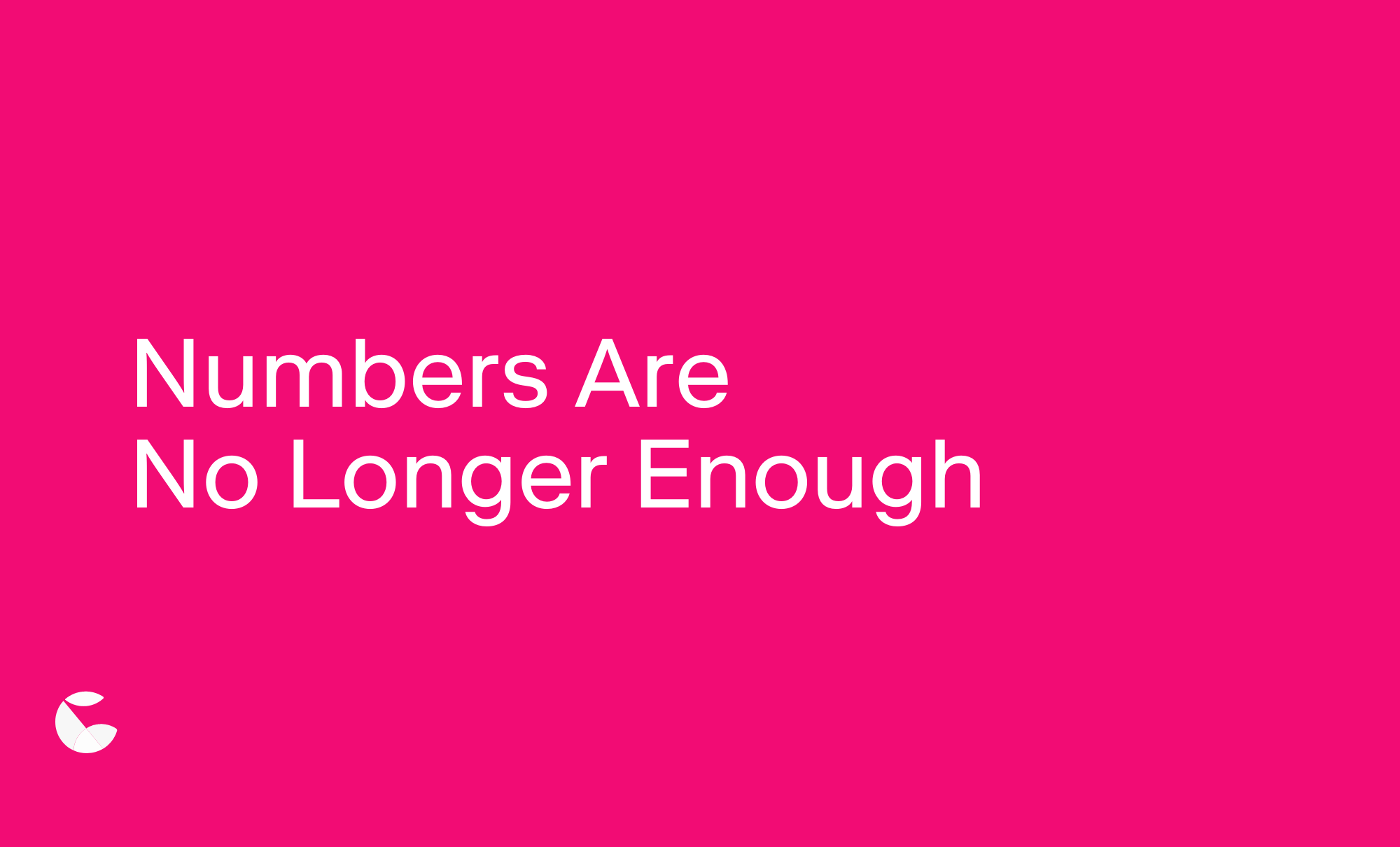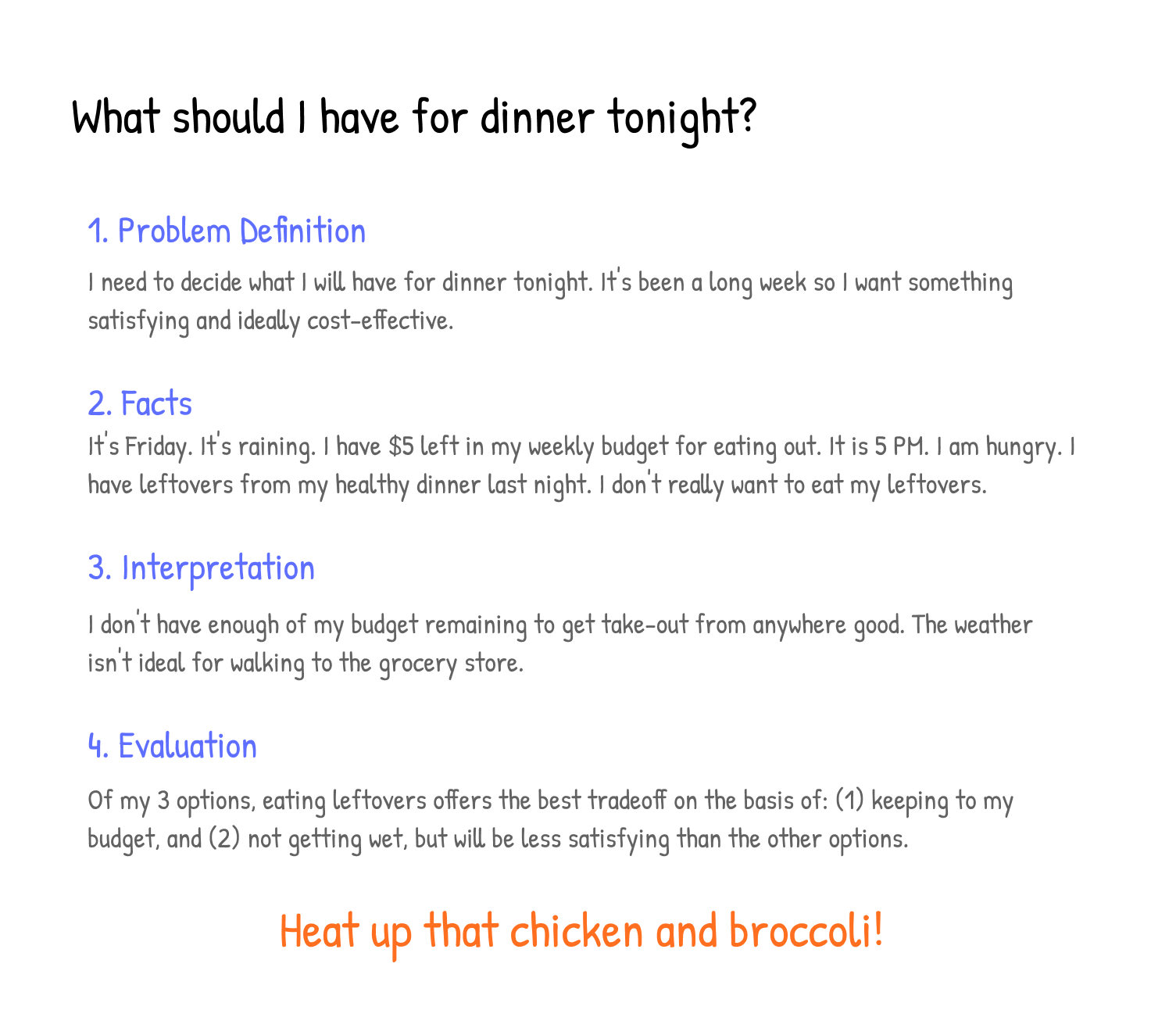Numbers Are No Longer Enough
To make better decisions, we need data tools that communicate more than just numbers.

With all the hype around data, it can be easy to forget that data is about making better decisions.
Building a data-driven organization is no easy task. There’s no shortage of products or theories promising us faster insights and more powerful analytics. But if our goal is to use this data to make better decisions, then there’s something else we need.
Stripping it back
While there have been many decision-making frameworks to make the rounds over the years (e.g. MDMP [1], Cynefin [2]), they all follow basically the same pattern:
Problem definition + Facts + Interpretation + Evaluation = Action

Here’s a quick example to make it clearer:

Now, this is a trivial example, but even so, all the elements need to be there otherwise you can’t make a decision, it’s just that in this simple case we bring all the elements together in our head almost instantly.
When the decision is more complex or the concepts are not so familiar each of these elements needs more consideration. In fact, the quality of the decision is only as good as the weakest element. No matter how good our facts are, if we interpret them poorly, don’t understand the wider context, or don’t reach a clear consensus then we’ll make a sub-optimal decision.
Numbers Are No Longer Enough
Historically our use of data has focused on Step 2: creating better facts. The mission was to remove ‘gut feel’ and intuition from the decision-making process and provide real evidence. This has been hugely successful, but the era of quick wins is over. Getting facts is rarely an issue now, every tool from your CRM to your running app offers you ‘insights’ and quite frankly, we’re reaching diminishing returns on faster ways to build a bar chart.

The opportunity now is to move beyond numbers and address how we improve all aspects of the decision-making process. This will allow us to make decisions faster and to answer more complex, nuanced questions with greater certainty.
The problem is that current data tools have been optimized around fact-making, not decision-making. They’re great at producing fancy graphs and queries but do little to support the other elements which need to come together.
What’s needed is a more holistic type of data tool that allows us to efficiently combine and communicate all aspects of a decision together in one place.
A Path Forward
There are many things we can do to improve the way we use data to drive decisions. We can continue to educate our teams on the principles of statistical relevance, create a culture that allows for evidence-based decisions and encourage critical thinking but having the right tools is also essential. They’re the enablers that can help good decision-making easy or hard to do.
Data + Context = Notebook
We believe part of the answer to this challenge lies with analytical notebooks. These hybrid tools bring together the communication abilities of long-form documents, with the analytical power of BI tools. This means users can:
- perform high-quality and detailed analysis
- combine these insights with narrative and other content
- create live and interactive reports that have everything that’s needed to drive consensus and action is in one document.
The benefits of notebooks for increasing trust and transparency in the analysis are well known within the data science sector but increasingly they’re being used across all areas of an organization. Companies like Airbnb and Netflix have embraced the role of notebooks in their organizations, making them the preferred way for not just the data science team, but the whole team communicates.
Notebooks are a simple idea repurposed but we see them as an easy first step towards better holistic data-driven decision-making.
For the last few years, we’ve been crafting our own BI notebook at Count. If you’d like to check it out for yourself, you can get a free account here.
This is article three of our “a call for better analyst’s tooling” series. Other articles in the series include:
- Dashboards are dead — why dashboards are no longer enough.
- The Analytical Workflow is Broken — why notebooks are replacing the standard analytics toolset.
- Numbers are no longer enough— why we need more than charts to change the world.
- How to bring notebooks to your organization—change your organization's performance one data request at a time.
Sign up for our newsletter to be notified about future posts.
References
[1] Holzgrefe, James P.. “A Framework to Simplify the Choice of Alternative Analysis and Selection Methods” (2015). Doctor of Philosophy (PhD), dissertation, Engineering Management, Old Dominion University, DOI: 10.25777/2073–7688 https://digitalcommons.odu.edu/emse_etds/88
[2] Snowden, David J. & Boone, Mary E.. “A Leader’s Framework for Decision Making” (2007). Harvard Business Review. https://hbr.org/2007/11/a-leaders-framework-for-decision-making
